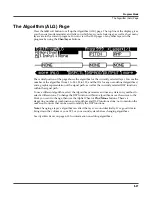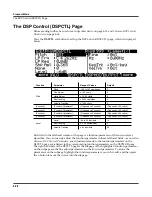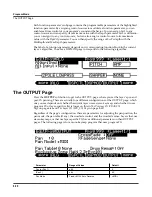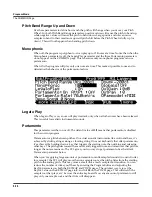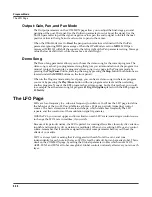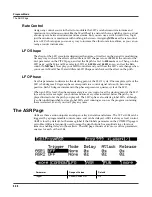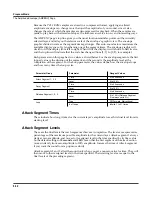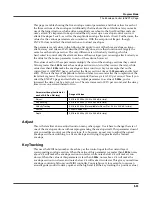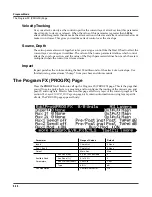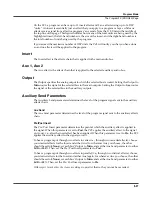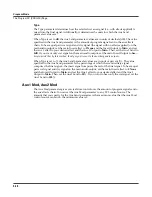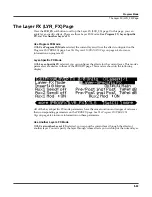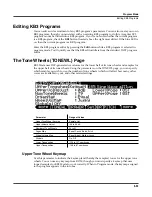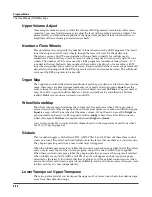
Program Mode
The Amplitude Envelope (AMPENV) Page
6-41
The Amplitude Envelope (AMPENV) Page
Amplitude envelopes have three sections: attack, decay, and release. The attack section
determines how long each note takes to reach its assigned amplitude level after you trigger a
Note On event. The decay section determines how quickly and how much a sustained sound
fades before a Note Off is triggered. The release section determines how quickly a sound fades
to silence
after
a Note Off is triggered.
Press the
AMPENV
soft button to reach the Amplitude Envelope page. For many programs, it
will look like the diagram below, which tells you that the amplitude for the current layer is the
default, “natural” ROM amplitude envelope that’s applied to each sample and waveform
during its original development process. You’ll leave the amplitude envelope in Natural mode
when you don’t want to change the way the current layer’s loudness develops.
If you want to build your own amplitude envelope, just turn the Alpha Wheel a click. The value
Natural
will change to
User
, and a set of AMPENV parameters will appear. The sound will
change when you do this, because the default settings for the User envelope, as shown in the
diagram below, take effect as soon as you leave Natural mode. Returning to Natural mode
applies the original amplitude envelope once again.
Many programs feature User envelopes with appropriate envelope settings. This is usually the
case for programs that use samples of acoustic instruments, since it provides a convenient
starting point for you to adjust the envelopes.
You’ll tweak the parameters on the AMPENV page when you want to shape the amplitude
characteristics of your sounds. A graphic view of the amplitude envelope will appear on the
display to give you a visual sense of the envelope’s characteristics. The dots along the envelope
graphic indicate the breakpoints between the envelope’s various segments. The small horizontal
arrow represents the end of the decay section. The small downward-pointing arrow represents
the beginning of the release section.
Summary of Contents for PC3
Page 24: ...1 6 Introduction Options ...
Page 50: ...4 4 The Operating Modes Using the Modes ...
Page 174: ...7 54 Setup Mode The Utility Soft Buttons ...
Page 178: ...8 4 Quick Access Mode Making Your Own QA Banks ...
Page 204: ...9 26 Effects Mono Algorithms ...
Page 266: ...A 2 MIDI Implementation Chart ...
Page 308: ...Index x ...

